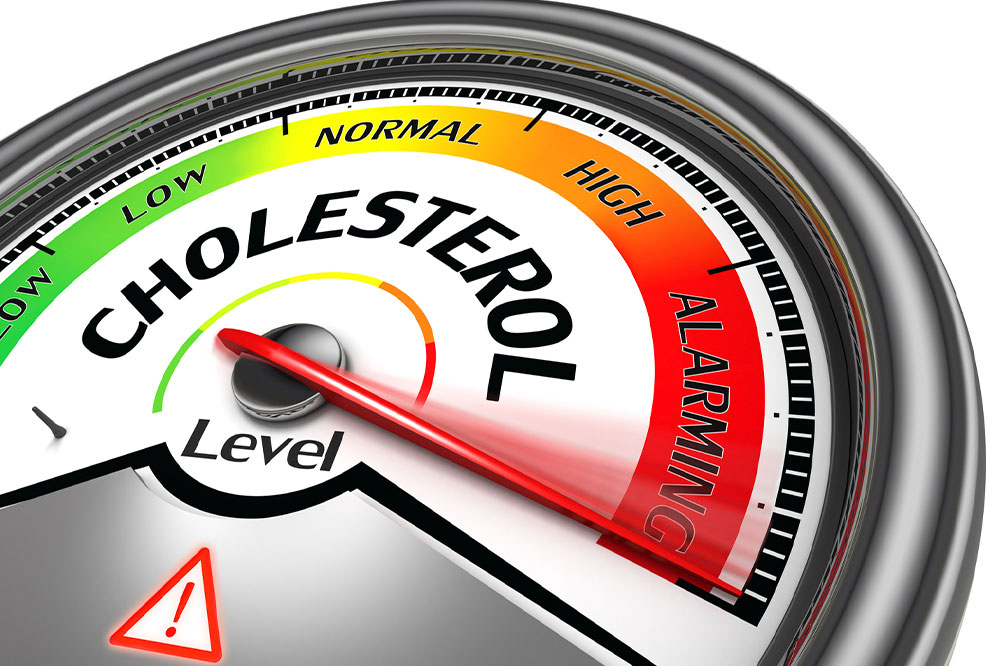What You Need to Understand About Cholesterol
Cholesterol is a word originating from the ancient Greek words chole- (bile) and stereos (solid). It is a sterol, which is a modified steroid. Cholesterol is a waxy, fat-like substance that’s found in all cells of the body. Your body doesn’t just have cholesterol, it needs it to function properly.

Does everybody already have cholesterol?
Yes. Your body needs cholesterol for several important body processes. Cholesterol is essential to maintain your cell membrane’s structural integrity and fluidity.
According to the American Heart Association, cholesterol doesn’t always stay in one place; it moves around in the body. It’s carried through your bloodstream by carriers made of fat and proteins, which are called lipoproteins.
HDL and LDL
There are two types of lipoproteins that carry cholesterol to and from cells. One is low-density lipoprotein or LDL. The other is high-density lipoprotein or HDL. The amount of each type of cholesterol in your blood can be measured by a blood test. This test is an important part of determining your overall cholesterol health and should be a part of any annual check-up. If it isn’t scheduled for you, request it.
LDL (Bad) Cholesterol
Low-density lipoprotein cholesterol is commonly referred to as ‘bad’ cholesterol, but what might be a better way to think of them is that they are less beneficial than other types. Elevated LDL levels are associated with an increased risk of heart disease. Lipoproteins, which are combinations of fats and proteins are the form in which lipids are transported in the blood. This is what can contribute to fatty buildups in arteries (atherosclerosis). This leads to the narrowing of the diameter of the arteries and raises the risk for heart attack, stroke, and peripheral artery disease.
HDL (Good) Cholesterol
HDL cholesterol acts as a maintenance crew for the inner walls (endothelium) of blood vessels. HDL acts as a scavenger, carrying LDL (less beneficial) cholesterol away from the arteries and therefore is known as the ‘good’ cholesterol. Basically, HDL helps in keeping your the arteries open and clear.
Should all fat be eliminated in the diet?
No. healthy fats should be included in your diet. It’s more important to focus on eating beneficial fats and avoiding harmful fats. Beneficial fats are unsaturated fats that can lower disease risk. Foods high in good fats include vegetable oils (such as olive, canola, sunflower, soy, and corn), nuts, seeds, and fish like wild-caught salmon. “Bad” fats are sometimes called trans fats and can increase disease risk, even when eaten in small quantities. Foods containing trans fats are primarily processed foods made with trans fat from partially hydrogenated oil. Saturated fats are best consumed in moderation. Foods containing large amounts of saturated fat include red meat, butter, cheese, and ice cream.
What is the right level?
LDL cholesterol levels lesser than 100 milligrams per deciliter (mg/dL) are desirable. HDL cholesterol levels between 40-60 milligrams per deciliter (mg/dL) are recommended. The key here is that a higher level of HDL cholesterol level may protect against heart attack and stroke.
Lifestyle changes to improve cholesterol
The first step in reducing cholesterol levels is to focus on diet and exercise. One of the best things you can do first is to increase soluble fiber in your diet. You can add soluble fiber to your diet by eating whole grains like oats, flaxseed, barley; fruits like apples; beans, lentils, and vegetables.
Next, eliminate the trans fats in your diet that are found in overly-processed foods like cookies, cakes, and other sweets and desserts that have zero nutrition and empty calories. Trans fats are twice as bad for you because they affect cholesterol levels by increasing the less beneficial cholesterol and lowering the highly beneficial cholesterol. This bad combination increases the risk of heart attacks. Trans fats can be found in fried foods and many commercial products and fast foods like hamburgers and French fries.
Lose weight
Carrying even a few extra pounds puts extra strain on your heart and can contribute to higher levels of less beneficial cholesterol. Once you change your diet to fresher foods that are not processed you’ll begin to lose weight as a natural benefit of a change in diet. Your blood will begin to flow more freely and the health benefits of better circulation are significant.
Exercise
Moderate physical activity can help raise high-density lipoprotein (HDL) cholesterol, the “good” cholesterol. Consult your physician first, then work up to at least 30 minutes of brisk exercise a day. Adding physical activity, even in 10-minute intervals several times a day, can be really beneficial for your health.
Foods that help with cholesterol health:
Herbs and Spices
Adding certain spices to your foods might do more than just make them delicious.Herbs and spices are loaded with antioxidant and anti-inflammatory activity, which is heart-healthy. Some foods to consider in this category are cinnamon, garlic, onion, ginger, turmeric, fenugreek, sage, and lemon balm.
Red wine
If consumed regularly in light-to-moderate amounts, red wine is known to decrease the risk of heart attacks, strokes, and other dire consequences of cardiovascular disease.
Recommended Recipe: 5 Recipes For Meals to Make With Red Wine Sauce
Chocolate
Chocolates contain the main type of flavonoid found in cocoa. These elements have antioxidant qualities. Chocolates that contain resveratrol contain the key nutrients that protect from toxins and help repair cell damage. Choose a dark chocolate with a cocoa content of 70 percent or higher.
Soy
Eating soy-based foods can be good for you because they contain less saturated fat than meat does and also provide other beneficial nutrients, such as vitamins, minerals and fiber. If you substitute soy for fatty meats, it may reduce your cholesterol level.
Other foods to consider as part of your heart-healthy, good cholesterol boosting diet are olive oil, spinach, salmon, nuts and seeds (without salt or sugar), tea, and fiber-rich beans.
If you can’t reduce your cholesterol levels with lifestyle changes alone, your doctor may recommend cholesterol-lowering treatment options.











